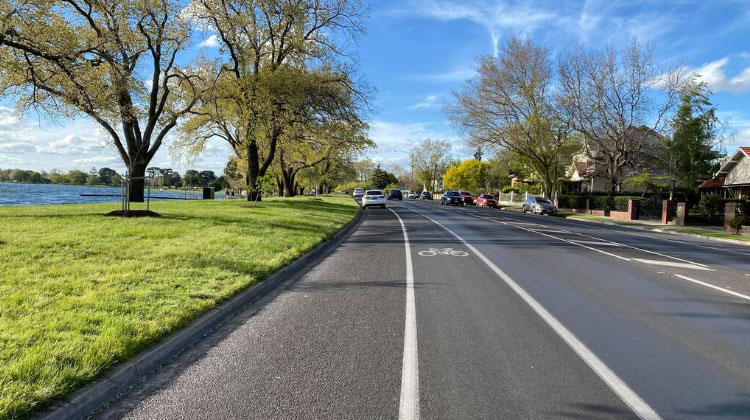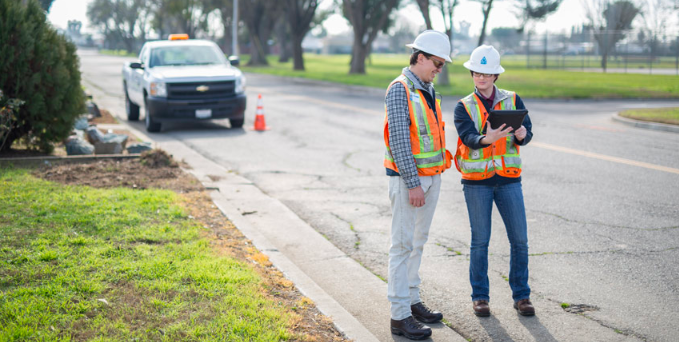Triggers of Traffic Impact Assessments
Roads authorities (VicRoads, Local Councils or other State Authorities based on location) will request the applicant to submit a Traffic Impact Assessment (TIA) for most Planning Permit Applications when the development is expected to generate traffic volumes that are likely to alter the existing operations of the surrounding network. This is also the case if the development is expected to impact the surrounding parking facilities, access points, intersections or the movement of pedestrians/cyclists. As the assigned Statutory Planner of your Council reviews the planning submission along with town planning drawings, they will make an assessment as to whether the application would require a Traffic Impact Assessment.
If you are handling your Planning Permit Application through an Architect, a Consultant Town Planner or a Building Designer, they may receive a document called Request For Information (RFI) upon lodging your Planning Application; which will ask for a Traffic Impact Assessment or a Car Parking Demand Assessments (for minor developments) to be submitted.
Traffic Impact Assessments sometimes referred to as Traffic Reports or Traffic Assessments are often requested for developments starting from as minor as three or more townhouses/units to larger developments such as multi-unit residential developments, commercial, retail or industrial developments. As a rule of thumb, larger the development, higher the chances are that your Council will ask for a Traffic Impact Assessment (TIA).
Contents of Traffic Impact Assessments
Many projects has some level of impact to the surrounding traffic or parking environment. It is therefore vital that these impacts are carefully analysed and managed with traffic, parking, access and road safety engineering treatments. A traffic impact assessment provides key design related inputs for urban designers, planners and architects to shape up their designs in a way that minimises adverse transport related impacts, while still achieving the best possible design outcomes. A traffic impact assessment or a traffic engineer’s design input has achieves its maximum potential when implemented at the commencement of a project, rather than when designs are almost at completion. There is always the risk that the Traffic Impact Assessment may require the designs to be amended significantly. Being pro-active could save a lot of costs.
While the general idea is to capture direct traffic engineering impacts resulting from developments such as increased congestion or road safety related risks, there are a significant number of assessments a traffic engineer undertakes when preparing a Traffic Impact Assessment. A RedSquare traffic engineer preparing a TIA looks at various factors including;
- Potential adverse impacts on local community and amenities;
- Network wide operational impacts especially at nearby key intersections;
- Road safety issues resulting from your development;
- Alignment of your development with current and future government strategies and objectives;
- Impacts on various modes of transport such as cyclists, pedestrians and public transport;
- Compliance of your development with local planning schemes; and
- Future proofing for upcoming changes in the road network.
Key Steps in Developing Traffic Impact Assessments
A traffic engineer develops a Traffic Impact Assessment including the following components;
- Description of existing conditions of the surrounding road network – A comprehensive desktop review and an on-site assessment captures the key features of the surrounding road network including characteristics of nearby roads, car parking facilities and restrictions, operations of nearby intersections, traffic volumes, crash history in the area and active/public transport provisions.
- Description of the proposed development and its relevance on the transport network – This section of a traffic impact assessment identifies and summarises the key features of the development in the context of traffic engineering and intends to break it down to work out its relevance to aspects such as traffic, parking and access designs.
- Identification of key stakeholders – Identification of relevant key stakeholders is a significantly important consideration as the essence of the Traffic Impact Assessment process is in fact to predict the impacts on these stakeholders. These stakeholders could be road users, nearby businesses, road authorities etc.
- Review of applicable Planning Scheme Clauses, Planning Overlays and Australian Standards – A large number of Planning Scheme Clauses could be applicable to your development depending on its location, size and operations. Applicable planning scheme clauses must be identified at the start to ensure the design is reviewed against these clauses, overlays and standards. This formulates the background for the core of the Traffic Impact Assessment.
- Statutory Car Parking Requirements – Having established the relevant clauses, overlays and standards, traffic engineers undertake a comprehensive car parking assessment; firstly to do with the number of car parking spaces. This part of the parking assessment assesses whether the parking provisions are in compliance with the Statutory Requirements specified under Clause 52.06 of the Planning Scheme (Victorian Reference). For other States and Territories, the parking requirements are specified in their respective Planning Clauses or DCP Clauses. Where the proposed parking provision numbers fall short of the requirement, a Car Parking Demand Assessment is necessary to justify that the development can operate with a car parking deficit. Read Car Parking Demand Assessments to learn more about these, which are sometimes produced as standalone documents for minor developments.
- Car Park Design Review – In addition to the requirements assessment, a car park design review is also a typical component of a Traffic Impact Assessment. A car park design review carefully analyses the compliance of the proposed car parking spaces against AS2890.1, AS2890.2, AS2890.6 and Clause 52.06, where relevant. Where non-conformance is found, our traffic engineers will liaise with your architect/town planner/designer to get the designs amended to achieve compliance.
- Traffic Impact Assessment – The traffic impact assessment component is the core of this entire document. This section predicts the amount of vehicular trips that will be generated from your development and predicts where it is expected to originate from. The origination assumptions are used to analyse which roads the traffic will approach from. The existing conditions established at the start of the assessment will now be compared against the proposed traffic movements to see if the difference creates a noteworthy impact. Often the impacts are negligible, but larger developments could have implications on the performance of intersections and other key points in the transport network. Sometimes formal access points are necessary and this could include the design of your access point inclusive of turn lanes etc.
- Swept Path Analysis – Often produced as a standalone document, a swept path analysis can also be a part of a traffic impact assessment. In simple terms, a swept path analysis simulates the path used by a certain vehicle when undertaking its manoeuvring within car parking areas. Read our blog article about swept paths learn more about Swept Path Analysis.
- Review of internal road layout – Often applicable for larger residential developments and retail developments where a separate internal road network is developed. The road network is reviewed from a traffic engineering perspective to assess whether it requires any traffic management treatments such as speed calming measures, footpaths, crossing treatments and traffic control devices such as roundabouts, traffic signals etc.
- Mitigation Measures – The entire traffic impact assessment process ultimately comes down to this, where our traffic engineers would present a comprehensive summarised list of mitigation measures originating from each of the sections described above. These recommendations are either addressed pre-application, during RFI stage or comes back as “conditions” in Planning Permit.
When a carefully developed Traffic Impact Assessment is accompanied with a Planning Permit Application, there is an increased probability of your Planning Permit Application getting approved without much hassle. It formulates strong justification that your development is suitable to the neighbourhood and is a well-thought out development. Not to mention the existing relationships we have with Local Councils often work in your favour as we are trusted consultants amongst fellow professionals in government agencies. A report prepared by a RedSquare Traffic will make a strong statement.
RedSquare Traffic’s experienced traffic engineers are able to assist you throughout this process from start to finish. to find out how to get one arranged.
Key Output(s): Traffic Impact Assessment (TIA) Reports, Access Designs, Car Parking Layout Designswill












